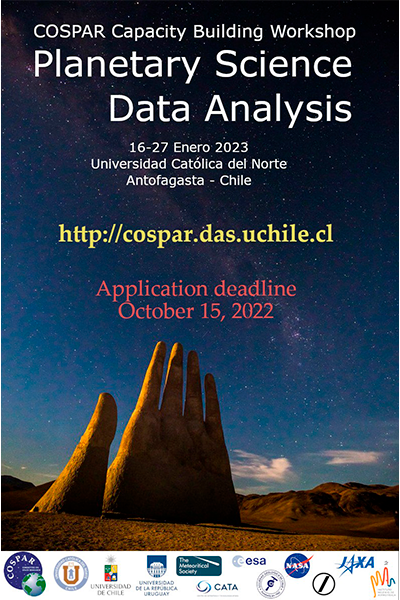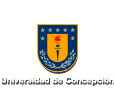San Pedro de Atacama, Chile, Nov. 28-Dec. 2, 2016
Scientific Rationale
 Astronomy is undergoing a major revolution in the way it approaches its core subject. With the increase in detector efficiency and size and the availability of ever more powerful computers, wide-field surveys, once few in number, have become increasingly common – and indeed, it is clear that the field will be largely dominated by massive wide-field surveys, photometric and spectroscopic alike, in the not-too-distant future.
Astronomy is undergoing a major revolution in the way it approaches its core subject. With the increase in detector efficiency and size and the availability of ever more powerful computers, wide-field surveys, once few in number, have become increasingly common – and indeed, it is clear that the field will be largely dominated by massive wide-field surveys, photometric and spectroscopic alike, in the not-too-distant future.
At this special transition moment between “classical” and survey-based astronomy, we are faced with important challenges on how to properly handle, process and analyze the increasingly large datasets that are continuously amassed by these surveys. Astronomers must increasingly work together with computer scientists and statisticians. Entirely new fields, such as the booming but fairly young field of Astrostatistics, are emerging in the process.
The challenge is particularly evident in the case of time-domain astronomy, where the databases needed can be larger by orders of magnitude, compared with the case of single-epoch surveys. Microlensing surveys such as MACHO, EROS, and OGLE have revealed to the community the enormous power of time-resolved surveys to study a vast number of different science topics, especially in the more general context of stellar variability. In this sense, pulsating variable stars, which are the main focus of this conference, come high at the top of the list.
Perhaps surprisingly, the last meeting that was aimed at discussing the impact of large-scale surveys on pulsating star research was held back in 1999, in Budapest, Hungary (IAU Colloquium 176, which was also the 14th edition of the Los Alamos Stellar Pulsation Conference Series). That meeting did help set the stage for the current state of affairs, but back in those days there were still few such massive surveys that were in operation – and those look rather small, in comparison with current and future surveys.
As a case in point, consider the OGLE project. Back in 1999, OGLE-II was taking data using a single 2k ´2k CCD. At present, OGLE-IV is scanning the southern skies from Las Campanas Observatory, in northern Chile, using an array of thirty-two 2k ´ 4k CCDs, covering a much wider area of the sky, and with data flows that are higher by orders of magnitude than in the early phases of the OGLE project.
In the near infrared, no time-resolved surveys were in operation back in 1999. Massive, wide-field variability surveys in the near-IR covering vast swathes of the sky are now being conducted for the first time in history. This includes the very successful Vista Variables in the Vía Láctea (VVV) survey and the Vista survey of the Magellanic Cloud system (VMC), both of which are ESO Public Surveys running on ESO’s Visible and Infrared Visible Telescope for Astronomy (VISTA), located in Cerro Paranal, northern Chile. Particularly revealing, in terms of the rise of the survey era, is the fact that ESO has built not just one, but actually two, state-of-the-art telescopes in Chile that are entirely dedicated to conducting surveys – the other one being the VLT Survey Telescope (VST). Wide-field spectroscopic survey facilities, such as APOGEE and LAMOST, are also rising in prominence.
Back in 1999 space-based astronomy did not count on any instruments devoted to time-resolved astronomical observations even remotely approaching the power of CoRoT and Kepler, which have provided a major recent boost to the field of asteroseismology in particular. In fact, back in 1999, the field of extrasolar planet research (CoRoT and Kepler’s main raison-d’être, to be sure) barely existed, and so the variable star community could not profit much from the constant flow of information that is now coming from wide-field, ground-based surveys whose main goal is to detect extrasolar planets through the transit method. In the late-1990’s, data collected with the Hipparcos satellite provided a fundamental contribution to the field of variable stars, and Gaia was just a distant concept. Now Gaia has become a reality, and first science-grade results can be anticipated in the very near future. By providing accurate astrometric distances to hundreds of thousands of variable stars across the Milky Way (as compared to just a handful, in the case of Hipparcos), Gaia will decidedly revolutionize our knowledge of the intrinsic properties of pulsating variable stars.
In like vein, many survey projects (often counting on dedicated telescopes) are now in operation, including several in Chile, whose main aim is to detect transient events, such as novae and (especially) supernovae. Examples include CRTS, PTF, ASAS-SN, HITS, CHASE, and Pan-STARRS. The most important (and largest) of all these projects, the Large Synoptic Survey Telescope (LSST), which is currently being built in Cerro Pachón, northern Chile, is slated to start operations by the end of this decade/beginning of the next. The nightly LSST data flow will dwarf that from even the largest existing surveys. A data tsunami is in the horizon, and its first ripples have just started to hit the shore. A change in paradigm in the way variable star astronomy is pursued is clearly imminent.
We thus believe that the time is ripe for a meeting specifically devoted to studying the impact of wide-field variability surveys upon pulsating star research. Just such a meeting will take place in late November – early December 2016, in San Pedro de Atacama, Chile, and our team is in charge of its organization.
The meeting will be part of the ongoing Los Alamos Stellar Pulsation Conference Series (hereafter LASPCS), which started in the early 1970’s and has been held every two or three years since. As already stated, this will be the 22nd meeting of the series, only the third to be held in the southern hemisphere, and the first ever in Latin America. The proposal to hold the meeting in San Pedro de Atacama was officially approved on occasion of the Granada LASPCS 2011 meeting (20th), and ratified during the latest Wrocław LASPCS 2013 meeting (21st). It was again enthusiastically endorsed by the stellar pulsation community on occasion of the Business Meeting of Commission 27 (Variable Stars) of the International Astronomical Union (IAU), which took place during the recent IAU General Assembly in Honolulu, Hawaii.
At the San Pedro LASPCS 2016 meeting, we plan to bring together astronomers who have been involved in the planning and execution of wide-field variability surveys – past, current, and future – in order to share experiences, ponder what we have been able to learn about pulsating variables in this way, and discuss strategies to face the approaching data tsunami.
We envisage a meeting where the leaders of some key past variability surveys will also deliver review talks, aimed at highlighting the lasting legacy of their work on the field of pulsating star research. In like vein, leaders of ongoing and planned surveys – ground- and space-based alike – will be invited to discuss the impact of their experiments on this type of science.
Major players in the fields of transient and exoplanetary surveys will also be invited to discuss the synergies between their projects and pulsating star science. Distinguished computer scientists and/or statisticians who make astronomy one of their main (if not the main) areas of research will similarly be invited, in order to provide their perspective on how to maximize the scientific return from such huge datasets.
Scientific Organizing Committee:
Wolfgang Gieren (Concepción, Chile – chair)
Márcio Catelan (PUC, Chile – co-chair)
Leandro Althaus (La Plata, Argentina)
Gisella Clementini (Bologna, Italy)
Licai Deng (NAOC, China)
Andrew J. Drake (Caltech, USA)
Frank Grundahl (Aarhus, Denmark)
Noriyuki Matsunaga (Tokyo, Japan)
Karen Pollard (Christchurch, New Zealand)
Andrzej Udalski (Warsaw, Poland)
Lucianne Walkowicz (Princeton, USA)
Patricia Whitelock (SAAO, South Africa)
Local Organizing Committee:
Jura Borissova (Univ. Valparaíso, Chile – chair)
Javier Alonso-García (Univ. Antofagasta, Chile)
Maja Vučković (Univ. Valparaíso, Chile)
Rodrigo Contreras Ramos (PUC, Chile)
Alexandre Gallenne (ESO, Chile)
Andrea Lagarini (ContactoChile, Chile)
Soledad Varela (ContactoChile, Chile)
Web Page: Pulsation2016










